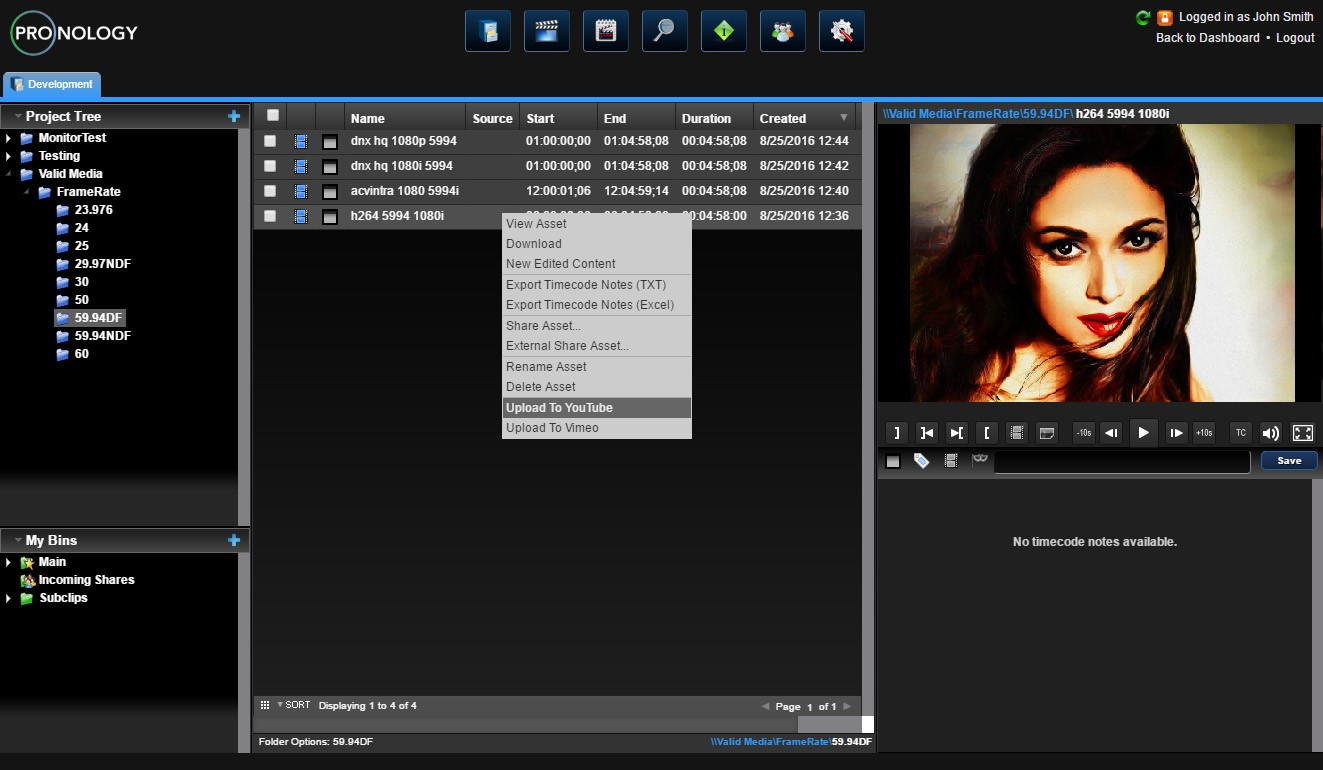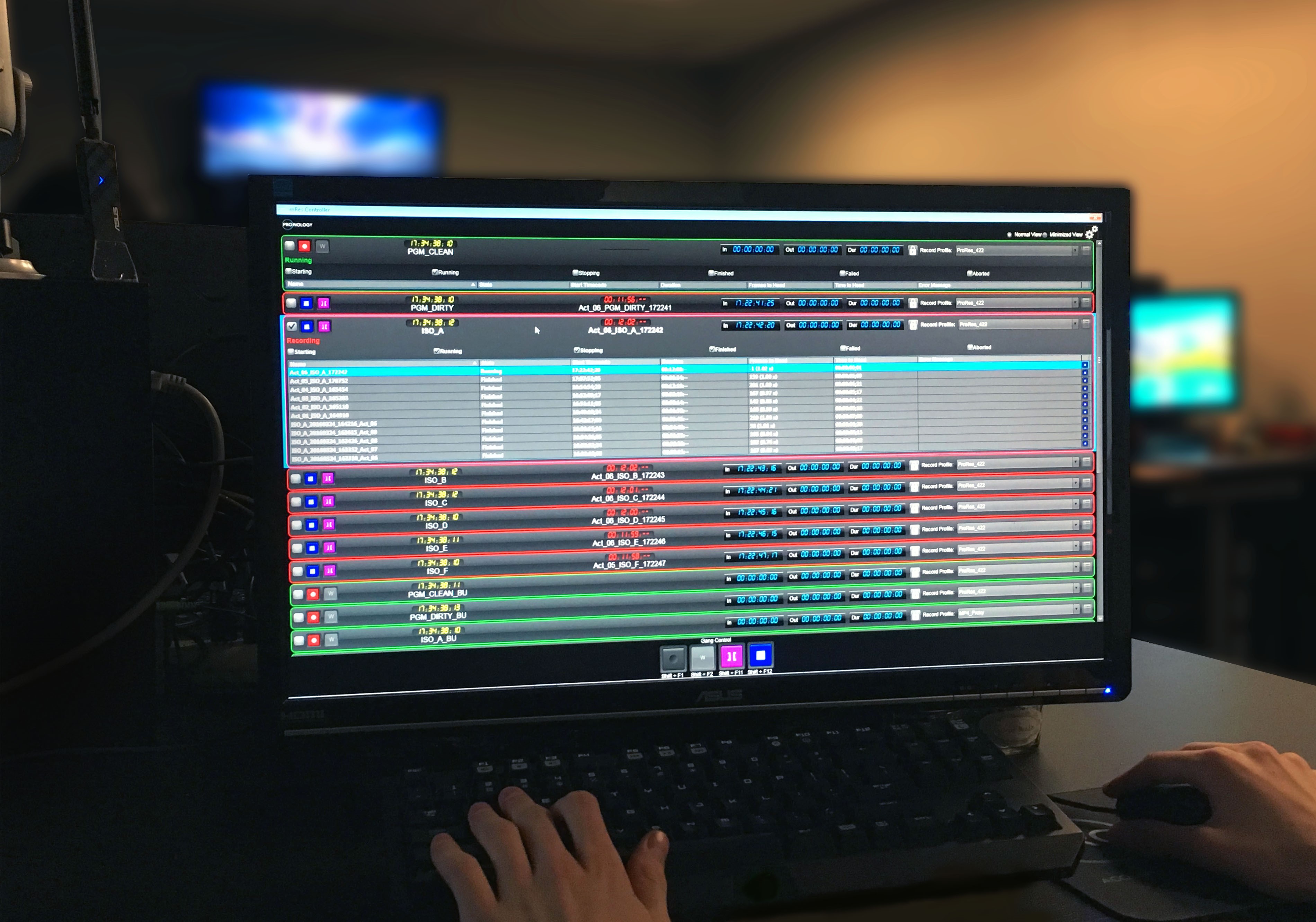NAB NY 2017: Pronology To Showcase Asset Management, Encoding Tools
Story Highlights
Pronology, a developer of tapeless workflow solutions, will showcase a selection of its asset management and encoding tools at NAB NY 2017 (Booth N270). The company will feature its CenterPoint Core media asset management (MAM) platform, mRes standalone multi-resolution encoder and Screener, a multi-channel, file-based production screening device, at this year’s show.
 “We are excited to showcase our complete range of products aimed at streamlining today’s productions at NAB NY,” says Jonathan Aroesty, president of Pronology. “This year’s product showcase is a testament to the hard work of all our employees and proof of Pronology’s commitment to providing the industry with cutting-edge and intuitive workflow solutions – from our traditional media asset management platform to our encoding offerings. We invite all attendees at the show to stop by our booth to see how our products can make their productions more efficient.”
“We are excited to showcase our complete range of products aimed at streamlining today’s productions at NAB NY,” says Jonathan Aroesty, president of Pronology. “This year’s product showcase is a testament to the hard work of all our employees and proof of Pronology’s commitment to providing the industry with cutting-edge and intuitive workflow solutions – from our traditional media asset management platform to our encoding offerings. We invite all attendees at the show to stop by our booth to see how our products can make their productions more efficient.”
Pronology’s Web- and Windows-based CenterPoint Core asset management system utilizes a flexible workflow engine that simplifies the daily tasks of end-to-end content creation, management and distribution. It provides users the option of working in the “cloud,” via an internal intranet or a secure Pronology-hosted network.
By utilizing a standard web-browser as its primary interface, CenterPoint Core allows a limitless number of users to simultaneously and remotely perform the following actions: Acquire, organize and transcode from ingest; complete real-time logging, sub-clipping and storyboarding; remotely manage approvals efficiently and archiving. The platform also offers significant social media/CMS distribution and the in-place management of pre-existing media via a volume-based indexing update for users in the broadcast, post and production markets.
 Pronology’s mRes standalone multi-resolution encoder is the company’s first standalone encoder. mRes records three tiers of uncompressed video per SDI input channel prior to compression and wrapping, without missing a frame of action: a high-resolution media file, an edit proxy and a live Web-streamable proxy, all while offering users flexibility and ease of use at a low cost point. mRes integrates with most storage systems, such as Avid ISIS and Small Tree. It also integrates with various NLE systems, including Avid, Apple and Adobe Premiere Pro CC, supporting growing clips for Edit-While-Capture workflows.
Pronology’s mRes standalone multi-resolution encoder is the company’s first standalone encoder. mRes records three tiers of uncompressed video per SDI input channel prior to compression and wrapping, without missing a frame of action: a high-resolution media file, an edit proxy and a live Web-streamable proxy, all while offering users flexibility and ease of use at a low cost point. mRes integrates with most storage systems, such as Avid ISIS and Small Tree. It also integrates with various NLE systems, including Avid, Apple and Adobe Premiere Pro CC, supporting growing clips for Edit-While-Capture workflows.
This unique recording architecture allows mRes to provide various file formats without any loss of quality or signal degradation. This is due to the fact that each copy is created from the original uncompressed file. For any given production, the various departments often require different codecs, wrappers and resolutions. When using mRes, a production team now has access to the content they need, in any of the required compression formats, instantaneously.
Pronology’s Screener is specifically aimed at directors, producers and other industry professionals working in studio, mobile, sporting and a variety of other environments. Screener replaces legacy DVD recorders that have been traditionally used for screening and offers a wealth of additional features that are useful for modern production.
Creating universally playable MP4 files, Screener is unique in that it is not solely a screening device. It can also visually watermark with text or graphics, record a timecode overlay, run on a standard PC or other off-the-shelf hardware and offers multiple channels per installation. It allows for HD-SDI playback functionality in multiple resolutions and can create sub-clips.
This allows operators to extract timecode-specific portions of a recording that can easily be viewed as well as securely shared for review and approval. Screener enables users to easily copy clips to network storage paths and removable storage devices, primarily USB 3 thumb drives. Other features include mobile device support, HD or SD input options and it allows users to internally add burn-in timecode from an external LTC source.
